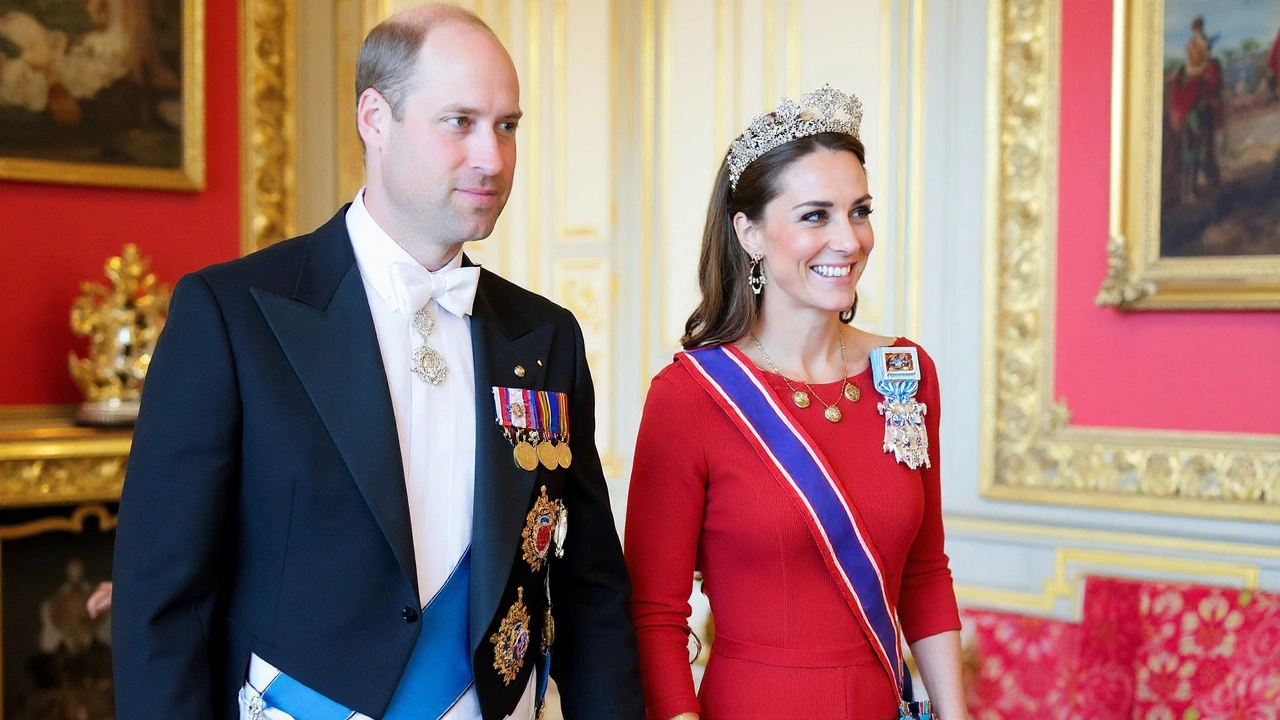A permanent shift from the palace to the park
The next King and Queen of Britain are preparing to do something that breaks with one of the monarchy’s most visible traditions: they do not plan to call Buckingham Palace home. By Christmas 2025, Prince William and Kate Middleton expect to move their family into Forest Lodge, an eight-bedroom house inside Windsor Great Park, and stay there for the long haul.
This will be their second move in three years. In 2022, they left London for Adelaide Cottage, a four-bedroom home in Windsor Home Park, to give their children more space and a more grounded routine. Forest Lodge is the next step up: more rooms, more privacy, and a setting that lets them build a life anchored in Windsor rather than London.
People close to the couple describe Windsor as the place that now feels like home. The shift follows a few difficult years while they were at Adelaide Cottage, and the new address is seen as a reset. It is a larger house but also a symbolic choice. It says they want stability for their three children and a base that will carry them through the years ahead, even after William becomes King.
The family is funding the move privately. That detail matters. Public spending on royal properties is closely watched, and choosing to pay for the relocation themselves underlines their push for a more modern, low-key approach to how they live and work.
Why Windsor? The answer starts with daily life. The couple has talked about wanting green space without losing easy access to the capital. Windsor delivers that: quick routes into London for official duties, but a quieter, safer environment for school runs, sport, and family time. Their children have been settled at a Berkshire prep school since 2022, and planting deeper roots nearby reduces disruption as they edge toward their teenage years.
There’s also the practical side. Windsor Great Park has extensive security and sits close to Windsor Castle, a working royal residence with established operations. Heathrow is not far, Ascot is on the doorstep, and central London is reachable for engagements. In short, their professional life stays efficient, while home life stays private.
Choosing to remain based in Windsor as King and Queen would mark a clear break with habit, not law. Since Queen Victoria made Buckingham Palace the monarch’s main residence in 1837, it has been the emblematic royal home in the public mind: balcony moments, Trooping the Colour flypasts, and state visits anchored in the heart of the capital. But how the sovereign actually lives has evolved. Queen Elizabeth II spent long stretches at Windsor Castle, especially in her later years. King Charles has split time between Clarence House and other residences while the palace undergoes major renovation work.
That renovation is a key backdrop. Buckingham Palace has been in the middle of a multi-year reservicing program to overhaul electrics, plumbing, and infrastructure. The works have already nudged the way the royal household uses the building. Even after the upgrade, the palace can function as a headquarters for ceremonies, receptions, and the day-to-day machinery of the monarchy without being a full-time family home.
If William and Kate keep Windsor as their base, the London setup is already clear. Apartment 1A at Kensington Palace — a 20-room wing they have used since 2013 — remains their official London address. It gives them a city foothold for meetings, investitures, and evening events. Forest Lodge would then operate as the family’s main residence, with Adelaide Cottage in the background. There has been no public guidance on what happens to Adelaide Cottage once they move, and the couple has not encouraged speculation.
The message is not anti-tradition; it is pro-function. They are leaning into what works for a family of five while still serving the demands of a national institution. You can see the broader pattern: a smaller, more focused royal team, fewer homes in constant rotation, and choices that play to stability over spectacle. The symbolism is powerful, though. If the future monarchs do not live at Buckingham Palace, it subtly recasts the palace — less a royal home in the domestic sense, more a national stage.
What would that mean for the palace? The basics would not change. It would still host state visits, garden parties, and major receptions. The balcony would still be the place for big national moments. The State Rooms, already familiar to summer visitors, could be a bigger draw if the building is positioned even more clearly as a ceremonial and public space. Staff operations, archives, and offices would remain anchored there or nearby, keeping the heart of the monarchy in the capital.
For Windsor, the benefits are obvious. Regular presence from the heir and his family brings steady attention to the town and the surrounding royal estate. The move also strengthens the existing cluster of royal activity in Berkshire, centered on Windsor Castle and the park. It is a short hop to key venues and military units, which often feature in the couple’s work.
The timing points to a careful, staged transition. A move by Christmas 2025 suggests a long lead-in for planning, security reviews, and any private interior work needed to make Forest Lodge family-ready. That approach fits how they handled the 2022 shift to Windsor: low drama, minimal disruption, and a fast return to routine once boxes are unpacked.
There is also an emotional undercurrent. After a period marked by family strain and health challenges across the wider royal circle, opting for a fresh start in a bigger home signals a desire to turn the page. A constant address through their children’s school years reduces churn and lets them build community — friends, clubs, and commitments that stick.
Public reaction will hinge on two things: how visible they remain in London and how efficient the setup proves to be. On both counts, the plan looks workable. Kensington Palace stays open for business. The commute from Windsor into the capital is routine. And Buckingham Palace remains the national front door for the Crown, even if it is no longer the place where the family spends most evenings.
The couple’s property footprint will likely be simpler to manage than it looks on paper. Forest Lodge as home, Kensington as office, and the rest used sparingly. That blend mirrors how many senior royals now operate: one primary residence for family life, one city base for the job, and a lighter touch elsewhere. For a role that mixes pageantry with parenthood, it’s a pragmatic call.
In the end, the move tells us how the next reign may look day to day: less about where the sovereign sleeps, more about showing up where the work is — schools, hospitals, regiments, charities — while keeping family life steady behind the scenes. A forever home in Windsor fits that picture.



